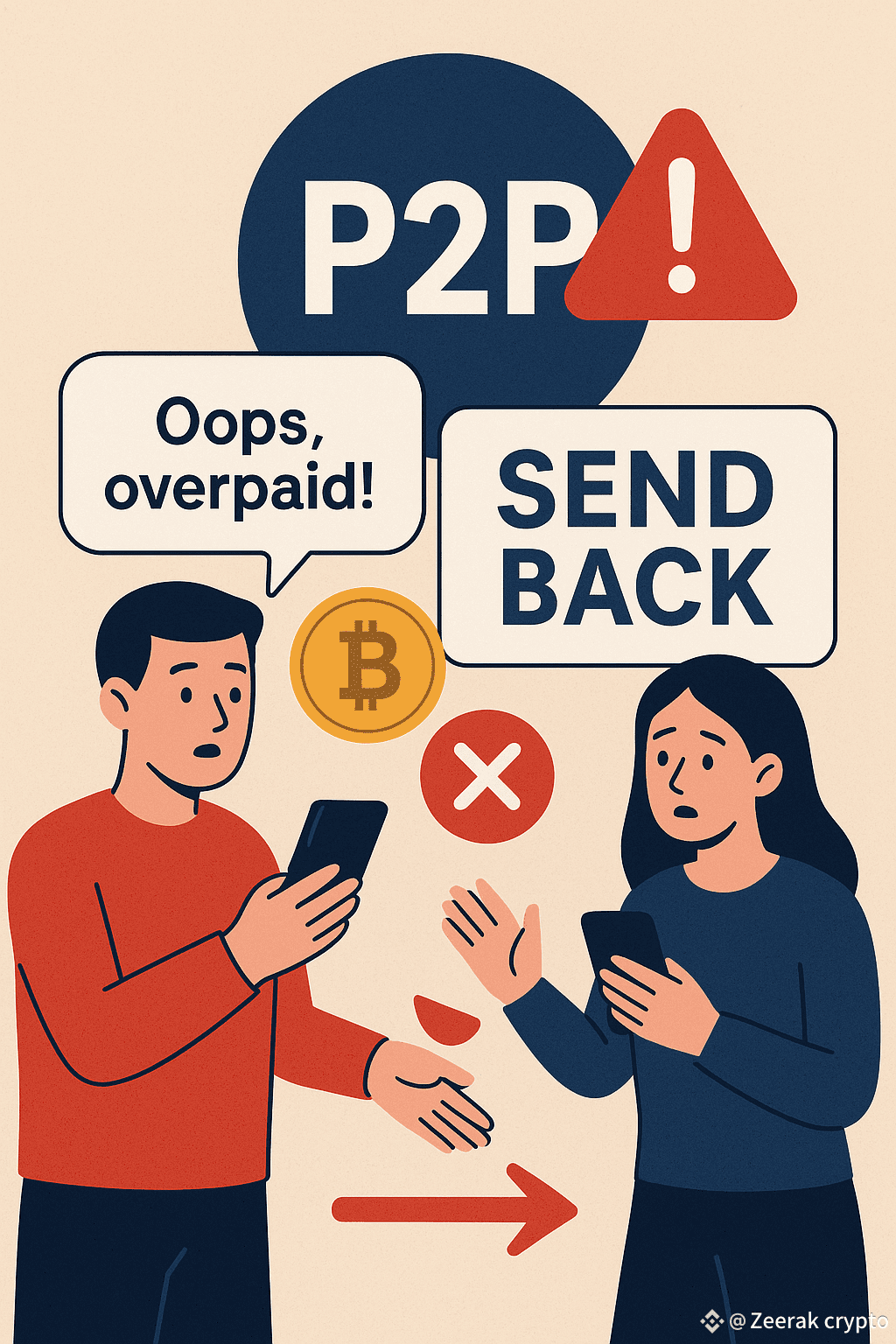Most peer-to-peer (P2P) crypto traders know the usual traps — fake payment slips, chargebacks, hacked accounts. But there’s a new twist making the rounds that’s so low-key, even seasoned sellers are falling for it.
The “Overpayment” Setup
Here’s the play-by-play:
1️⃣ A Clean Start – The scammer opens a standard trade on the P2P platform and sends you the payment for your crypto.
2️⃣ Just a Bit Extra – Instead of the exact amount, they pay a few dollars more — usually $3–$5.
3️⃣ The Friendly Ask – They message: “Oops, overpaid! Mind sending the extra back?”
4️⃣ The Sting – If you refund that small amount outside the platform, they report you for off-platform transactions. Your account could be frozen or banned — and the scammer keeps your crypto.
Why It Works
It feels harmless. A few dollars back? Most sellers think it’s just good manners.
Rules are strict. P2P platforms have zero tolerance for money transfers outside their system — even if you’re “fixing a mistake.”
They own the story. Once they report you, the platform may side with the buyer if you can’t prove otherwise.
Protect Yourself
✅ Never move funds outside the platform’s payment process.
✅ If there’s an overpayment, cancel and restart the trade with the correct amount.
✅ Keep all chats inside the platform — it’s your proof if things go bad.
✅ Stay informed — scammers update their tricks just as fast as markets move.
Bottom Line:
P2P trading can be safe and profitable — but only if you stick to the rules. The “overpayment” scam weaponizes your good intentions.
In P2P, remember: Kindness without caution can cost you both your account and your crypto.
